Connecting to Snowflake
Connecting to Snowflake in Tellius is easy with direct authentication. Set up your host, role, and credentials, browse schemas, and import tables for fast analysis.
Snowflake is a highly scalable, cloud-based data warehousing platform that supports fast, secure, and flexible analytics on large datasets. In Tellius, you can connect to your Snowflake account by choosing one of three authentication types—Direct (username/password), Key Pair (public/private key), or OAuth (token-based SSO).
Direct: Traditional username/password authentication. This is the most common method for simple setups or initial testing.
Key Pair: Uses an RSA key pair (public/private key) instead of a password. Recommended for increased security and passwordless logins.
OAuth: Delegates authentication to an OAuth provider that grants access tokens for Snowflake. Ideal if your organization uses Single Sign-On or centralized OAuth-based security.
Direct method
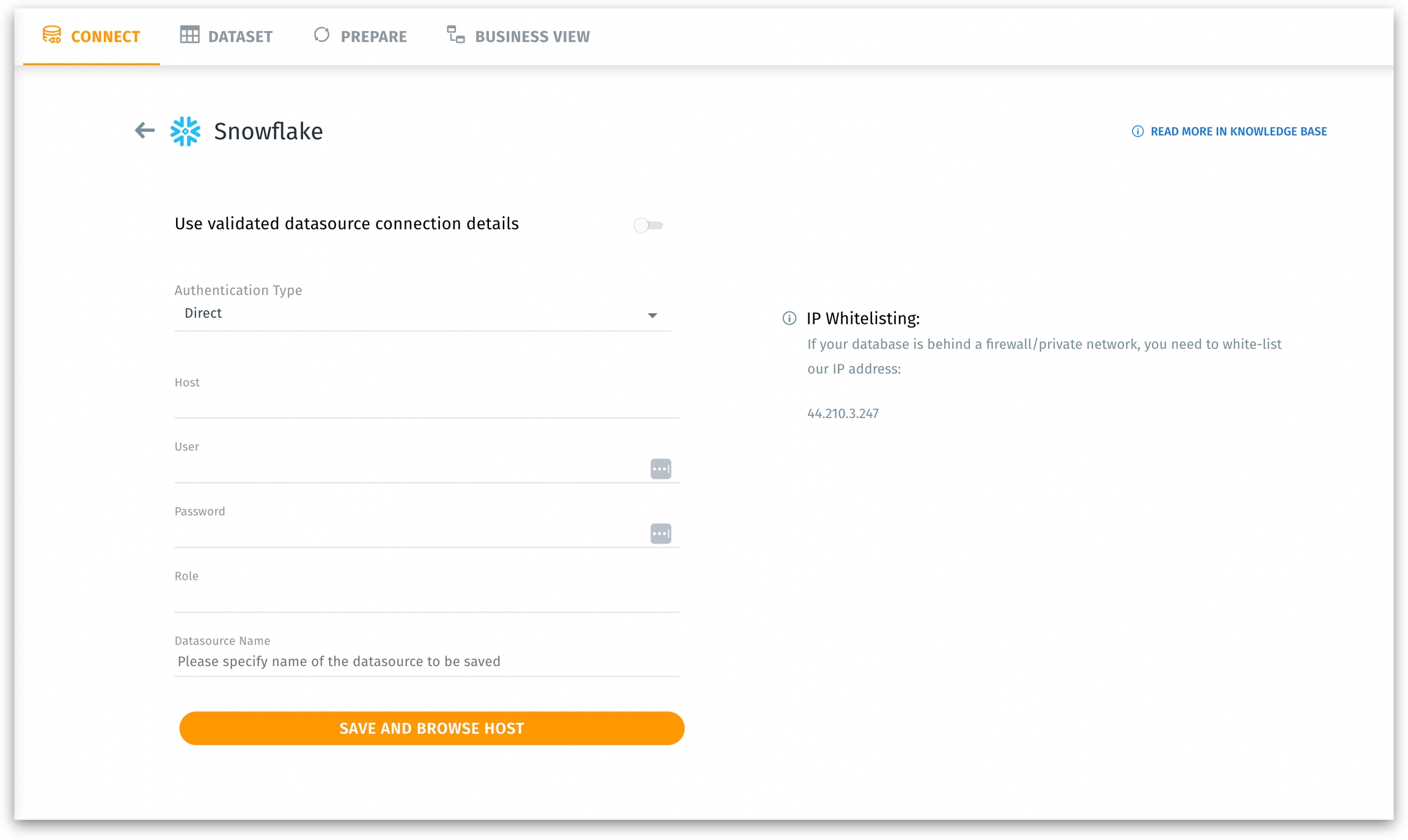
Authentication Type: The method used to authenticate with Snowflake. Choose Direct method here.
Host: The account URL or hostname of your Snowflake instance (e.g.,
mycompany.us-east-1.snowflakecomputing.com). It must match your Snowflake region/account identifier.User: Provide the username with appropriate permissions (atleast read-access) to read data.
Password: Provide the corresponding password for the User provided.
Role: The Snowflake role you want to assume upon login (e.g., SYSADMIN, ANALYST). Determines which databases/schemas/tables you can access and what operations are allowed.
Datasource Name: A user-friendly name for this connection in Tellius.
Save and Browse Host: Saves the connection details and attempts to browse the host for available schemas and tables. This initiates the handshake with the Snowflake server.
Using validated datasource connection details
If you’ve previously validated and saved a Snowflake connection, you can reuse its details:

Use validated datasource connection details: When enabled, it reveals a dropdown to choose from existing, previously configured Snowflake connections.
Select datasource: Lists all pre-validated Snowflake connections. Select the one you want to reuse and all the fields will be filled automatically as configured.
Browse Host: Similar to “Save and Browse Host”, but now it just navigates forward using the chosen existing connection’s parameters.
Loading tables
After establishing a connection, you will see options to load data from Snowflake tables
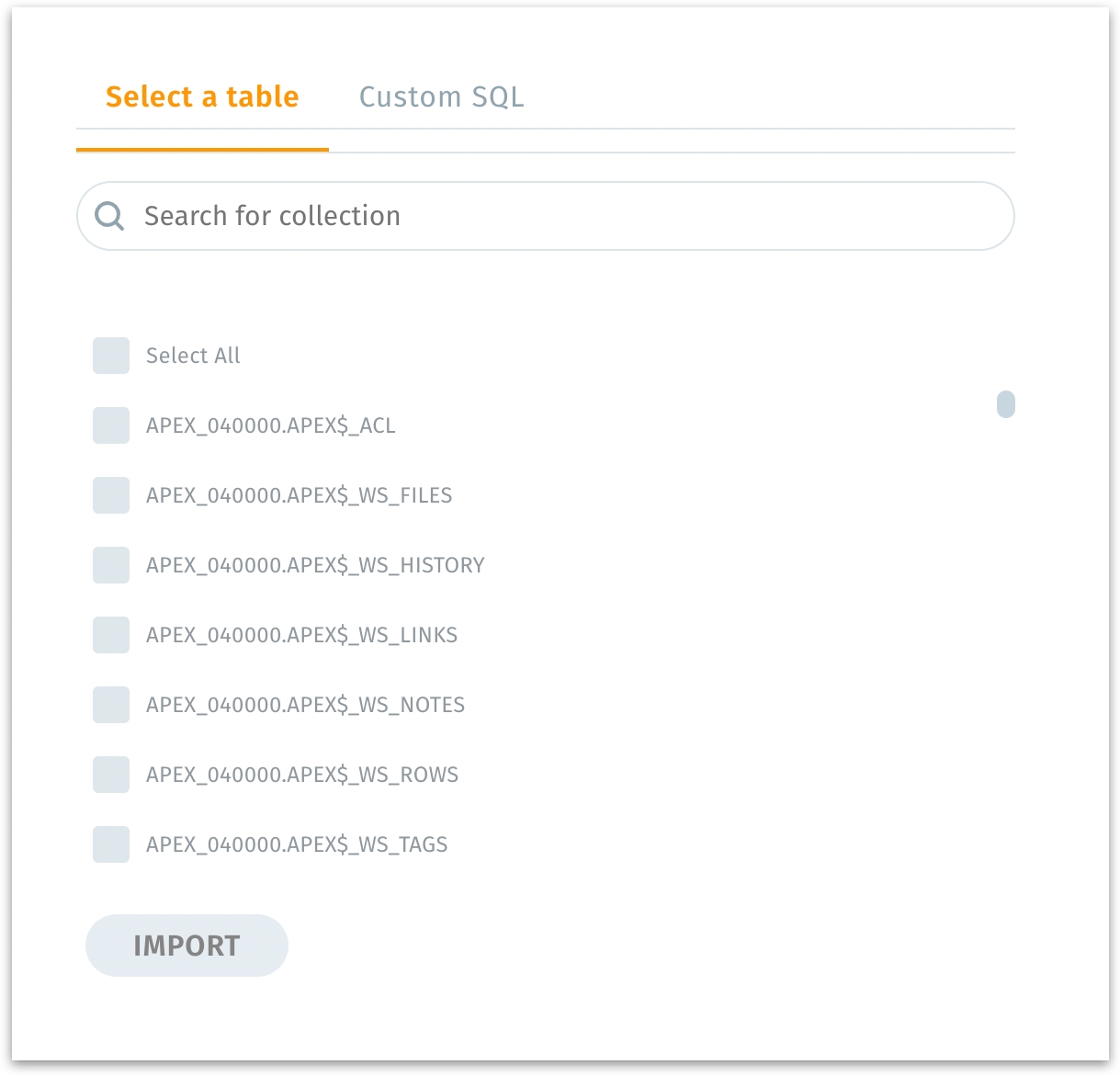
Select a table: Displays all available tables under the chosen Snowflake service/schema. Pick the tables you need for analysis. If there are many tables, you can narrow down your selection.
Search for table: Filters the displayed tables based on your search term.
Import: Imports the selected table(s) into Tellius.
Using Custom SQL
If you prefer more granular control or want to write your own SQL queries to load precisely the data you need, switch to "Custom SQL" tab.
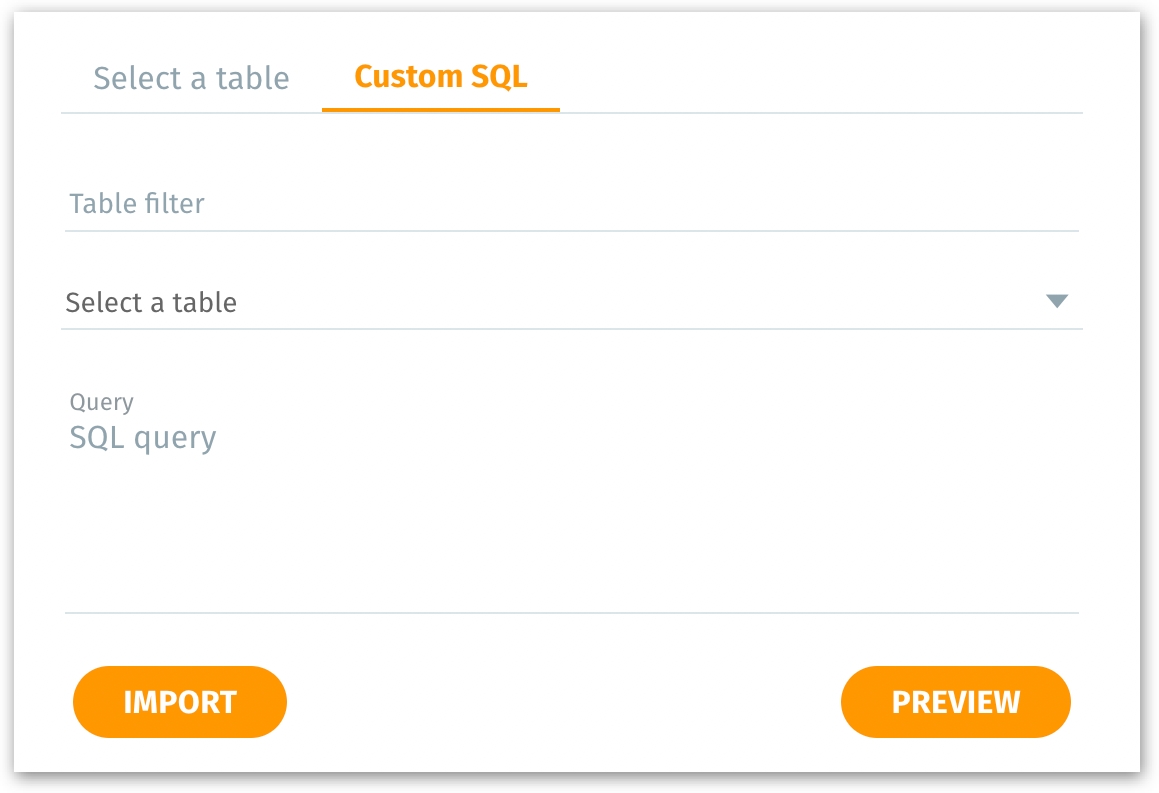
Table filter: Helps locate a particular table by name before writing your SQL.
Select a table: Choose a table name to use in your custom query.
Query: A field for your custom SQL statement (e.g.,
SELECT * FROM SYS.WRI$_DBU_CPU_USAGE).Preview: Executes the SQL query and displays a few sample rows of the data you’re about to import in the “Dataset Preview” area. Allows you to validate that the query returns the correct data before fully importing it. This helps catch syntax errors or incorrect filters early.
Import: Once satisfied with the preview, click Import to load the data returned by the SQL query into Tellius.
Advanced Settings
Once you import, you’ll have the option to refine how the dataset is handled:
Dataset name: Assign a valid name to your new dataset (e.g.,
XYZ_THRESHOLD). Names should follow the allowed naming conventions (letters, numbers, underscores, no leading underscores/numbers, no special chars/spaces).Connection Mode When the Live checkbox is selected, the queries will be fetched from the database each time, and the data will not be copied to Tellius. Live mode ensures the most up-to-date data at the cost of potential query latency.
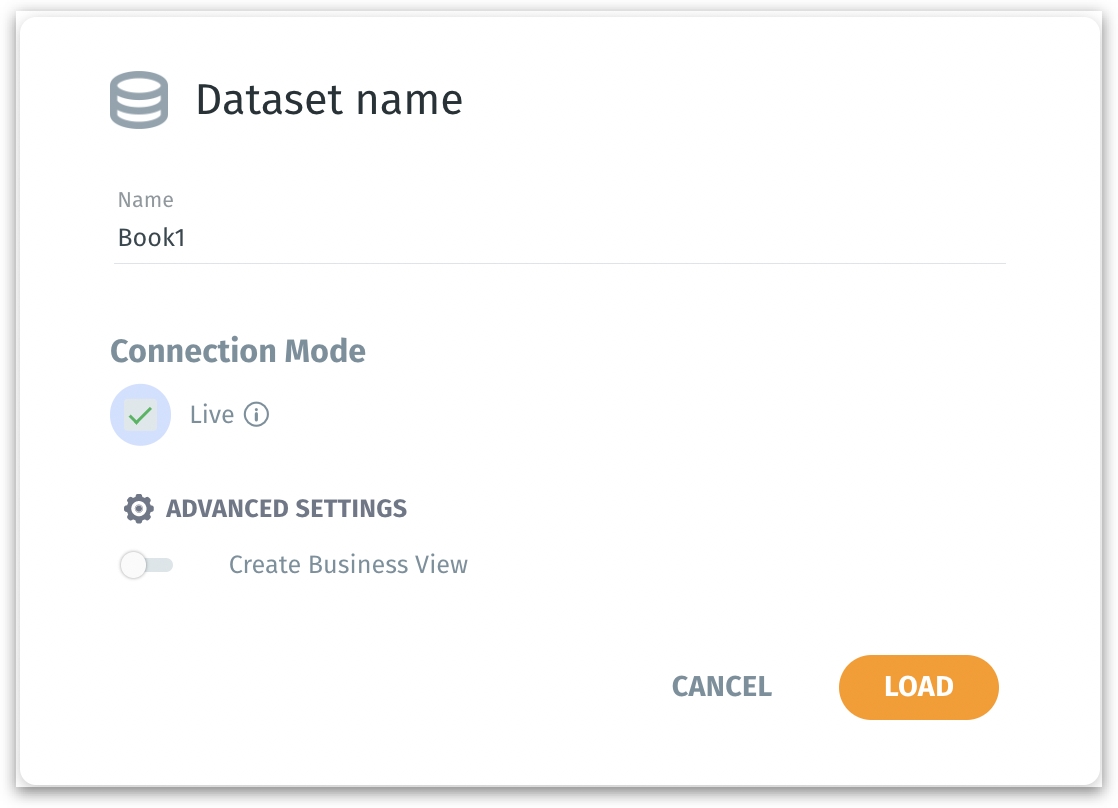
When Live mode is enabled, then only Create Business View option will be displayed.
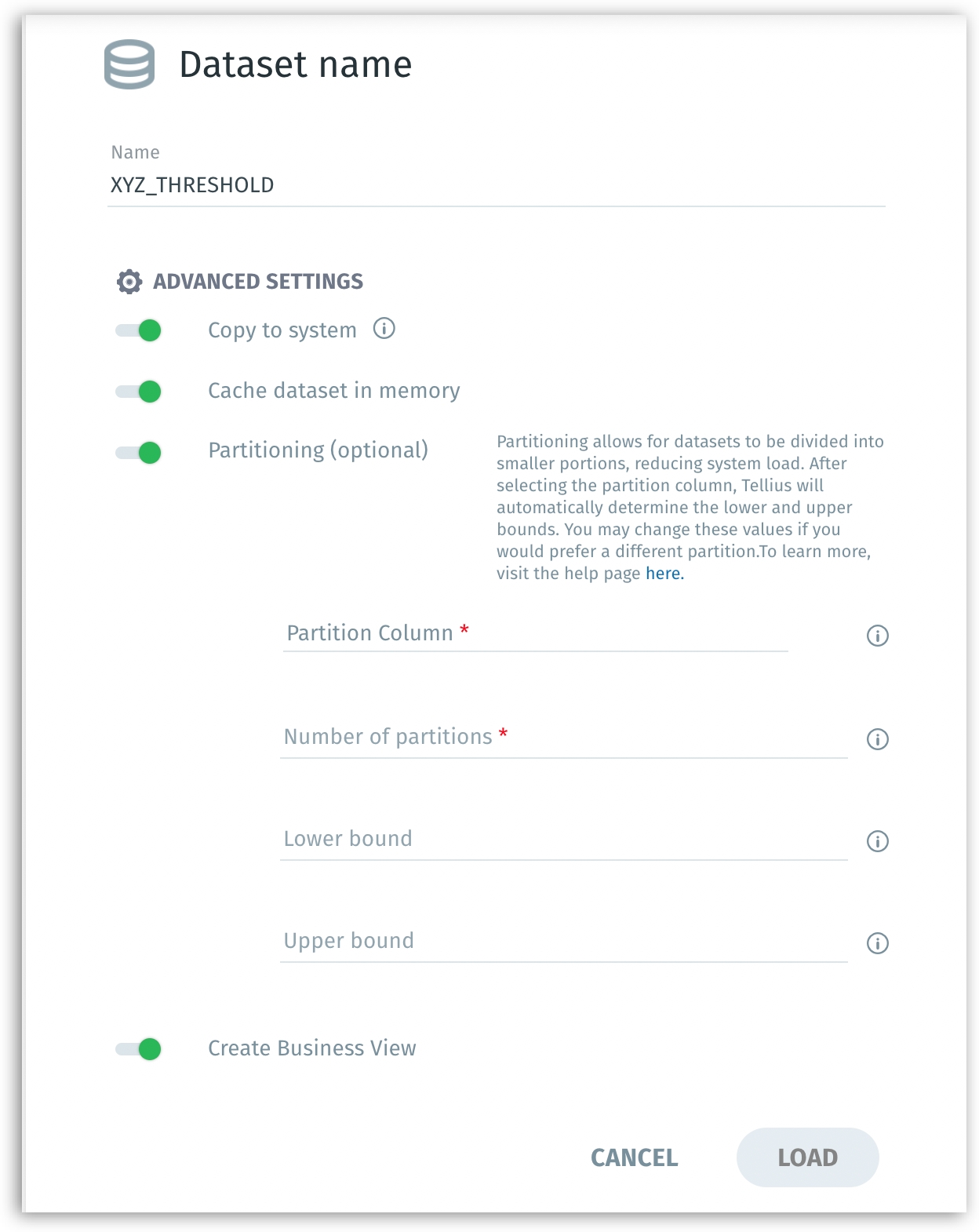
Copy to system: If enabled, copies the imported data onto Tellius’s internal storage for faster performance. Reduces dependency on the source database’s speed and network latency. Good for frequently queried datasets.
Cache dataset in memory: If enabled, keeps a cached copy of the dataset in memory (RAM) for even faster query responses. Memory caching dramatically reduces query time, beneficial for dashboards and frequently accessed data.
When only one table is imported, the following options will also be displayed:
Partitioning: If enabled, it splits a large dataset into smaller logical chunks (partitions). Improves performance on large tables, enabling parallel processing and faster load times. For more details, check out this dedicated page on Partitioning.
Partition column: The column used as a basis for partitioning.
Number of partitions: How many segments to break the data into. (e.g., 5 partitions)
Lower bound/Upper bound: Approximate value range in the partition column to evenly distribute data.
Create Business View: If enabled, after loading data, you will be guided into the Business View creation stage.
Click on Load to finalize the process. After clicking Load, your dataset appears under Data → Dataset, ready for exploration, preparation, or business view configuration. Else, click on Cancel to discard the current importing process without creating the dataset.
After the dataset is created, you can navigate to "Dataset", where you can review and further refine your newly created dataset. Apply transformations, joins, or filters in the Prepare module.
Was this helpful?